A Joint Model for Extended Semantic Role Labeling
advertisement
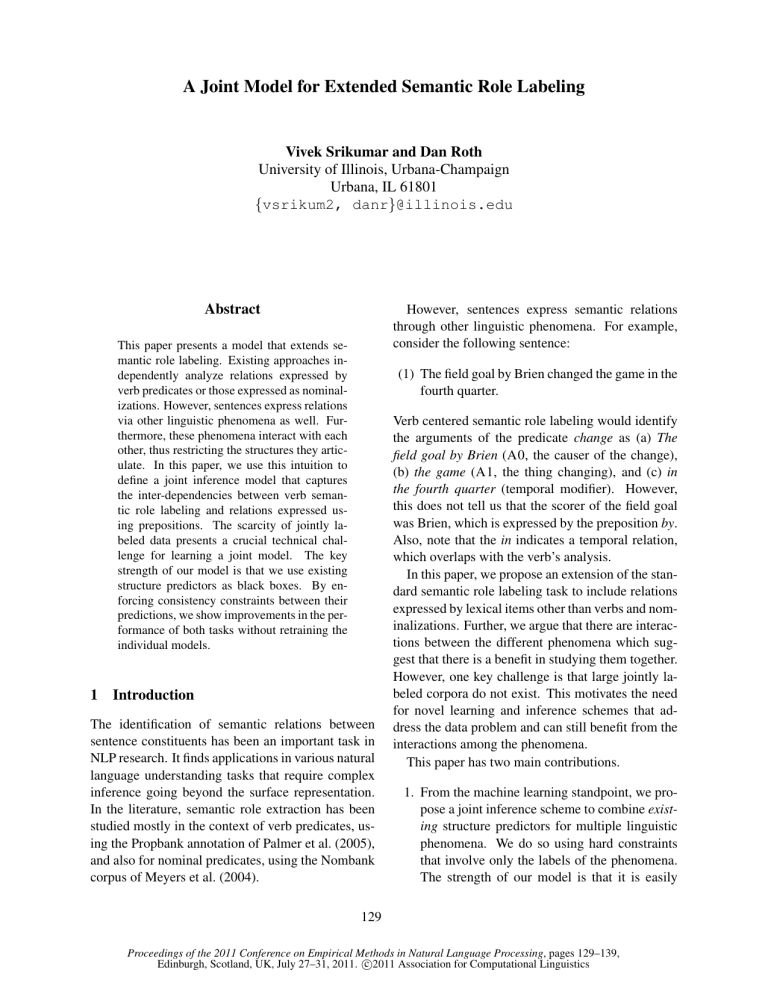
A Joint Model for Extended Semantic Role Labeling
Vivek Srikumar and Dan Roth
University of Illinois, Urbana-Champaign
Urbana, IL 61801
{vsrikum2, danr}@illinois.edu
Abstract
However, sentences express semantic relations
through other linguistic phenomena. For example,
consider the following sentence:
This paper presents a model that extends semantic role labeling. Existing approaches independently analyze relations expressed by
verb predicates or those expressed as nominalizations. However, sentences express relations
via other linguistic phenomena as well. Furthermore, these phenomena interact with each
other, thus restricting the structures they articulate. In this paper, we use this intuition to
define a joint inference model that captures
the inter-dependencies between verb semantic role labeling and relations expressed using prepositions. The scarcity of jointly labeled data presents a crucial technical challenge for learning a joint model. The key
strength of our model is that we use existing
structure predictors as black boxes. By enforcing consistency constraints between their
predictions, we show improvements in the performance of both tasks without retraining the
individual models.
1
(1) The field goal by Brien changed the game in the
fourth quarter.
Introduction
The identification of semantic relations between
sentence constituents has been an important task in
NLP research. It finds applications in various natural
language understanding tasks that require complex
inference going beyond the surface representation.
In the literature, semantic role extraction has been
studied mostly in the context of verb predicates, using the Propbank annotation of Palmer et al. (2005),
and also for nominal predicates, using the Nombank
corpus of Meyers et al. (2004).
Verb centered semantic role labeling would identify
the arguments of the predicate change as (a) The
field goal by Brien (A0, the causer of the change),
(b) the game (A1, the thing changing), and (c) in
the fourth quarter (temporal modifier). However,
this does not tell us that the scorer of the field goal
was Brien, which is expressed by the preposition by.
Also, note that the in indicates a temporal relation,
which overlaps with the verb’s analysis.
In this paper, we propose an extension of the standard semantic role labeling task to include relations
expressed by lexical items other than verbs and nominalizations. Further, we argue that there are interactions between the different phenomena which suggest that there is a benefit in studying them together.
However, one key challenge is that large jointly labeled corpora do not exist. This motivates the need
for novel learning and inference schemes that address the data problem and can still benefit from the
interactions among the phenomena.
This paper has two main contributions.
1. From the machine learning standpoint, we propose a joint inference scheme to combine existing structure predictors for multiple linguistic
phenomena. We do so using hard constraints
that involve only the labels of the phenomena.
The strength of our model is that it is easily
129
Proceedings of the 2011 Conference on Empirical Methods in Natural Language Processing, pages 129–139,
Edinburgh, Scotland, UK, July 27–31, 2011. c 2011 Association for Computational Linguistics
extensible, since adding new phenomena does
not require fully retraining the joint model from
scratch. Furthermore, our approach minimizes
the need for extensive jointly labeled corpora
and, instead, uses existing predictors as black
boxes.
2. From an NLP perspective, we motivate the extension of semantic role labeling beyond verbs
and nominalizations. We instantiate our joint
model for the case of extracting preposition and
verb relations together. Our model uses existing systems that identify verb semantic roles
and preposition object roles and jointly predicts the output of the two systems in the presence of linguistic constraints that enforce coherence between the predictions. We show that
using constraints to combine models improves
the performance on both tasks. Furthermore,
since the constraints depend only on the labels
of the two tasks and not on any specific dataset,
our experiments also demonstrate that enforcing them allows for better domain adaptation.
The rest of the paper is organized as follows: We
motivate the need for extending semantic role labeling and the necessity for joint inference in Section 2.
In Section 3, we describe the component verb SRL
and preposition role systems. The global model is
defined in Section 4. Section 5 provides details on
the coherence constraints we use and demonstrates
the effectiveness of the joint model through experiments. Section 6 discusses our approach in comparison to existing work and Section 7 provides concluding remarks.
2
Problem Definition and Motivation
Semantic Role Labeling has been extensively studied in the context of verbs and nominalizations.
While this analysis is crucial to understanding a
sentence, it is clear that in many natural language
sentences, information is conveyed via other lexical items. Consider, for example, the following sentences:
(2) Einstein’s theory of relativity changed physics.
(3) The plays of Shakespeare are widely read.
130
(4) The bus, which was heading for Nairobi
in Kenya, crashed in the Kabale district of
Uganda.
The examples contain information that cannot be
captured by analyzing the verbs and the nominalizations. In sentence (2), the possessive form tells us
that the theory of relativity was discovered by Einstein. Furthermore, the theory is on the subject of
relativity. The usage of the preposition of is different in sentence (3), where it indicates a creatorcreation relationship. In the last sentence, the same
preposition tells us that the Kabale district is located
in Uganda. Prepositions, compound nouns, possessives, adjectival forms and punctuation marks often express relations, the identification of which is
crucial for text understanding tasks like recognizing
textual entailment, paraphrasing and question answering.
The relations expressed by different linguistic
phenomena often overlap. For example, consider the
following sentence:
(5) Construction of the library began in 1968.
The relation expressed by the nominalization construction recognizes the library as the argument of
the predicate construct. However, the same analysis can also be obtained by identifying the sense of
the preposition of, which tells us that the subject of
the preposition is a nominalization of the underlying
verb. A similar redundancy can be observed with
analyses of the verb began and the preposition in.
The above example motivates the following key intuition: The correct interpretation of a sentence is
the one that gives a consistent analysis across all
the linguistic phenomena expressed in it.
An inference mechanism that simultaneously predicts the structure for different phenomena should
account for consistency between the phenomena. A
model designed to address this has the following
desiderata:
1. It should account for the dependencies between
phenomena.
2. It should be extensible to allow easy addition of
new linguistic phenomena.
3. It should be able to leverage existing state-ofthe-art models with minimal use of jointly labeled data, which is expensive to obtain.
Systems that are trained on each task independently do not account for the interplay between
them. One approach for tackling this is to define
pipelines, where the predictions for one of the tasks
acts as the input for another. However, a pipeline
does not capture the two-way dependency between
the tasks. Training a fully joint model from scratch
is also unrealistic because it requires text that is annotated with all the tasks, thus making joint training implausible from a learning theoretic perspective
(See Punyakanok et al. (2005) for a discussion about
the learning theoretic requirements of joint training.)
3
Tasks and Individual Systems
Before defining our proposed model that captures
the requirements listed in the previous section, we
introduce the tasks we consider and their independently trained systems that we improve using the
joint system. Though the model proposed here is
general and can be extended to several linguistic
phenomena, in this paper, we focus on relations expressed by verbs and prepositions. This section describes the tasks, the data sets we used for our experiments and the current state-of-the-art systems for
these tasks.
We use the following sentence as our running example to illustrate the phenomena: The company
calculated the price trends on the major stock markets on Monday.
3.1
Preposition Relations
Prepositions indicate a relation between the attachment point of the preposition and its object. As we
have seen, the same preposition can indicate different types of relations. In the literature, the polysemy of prepositions is addressed by The Preposition Project1 of Litkowski and Hargraves (2005),
which is a large lexical resource for English that labels prepositions with their sense. This sense inventory formed the basis of the SemEval-2007 task of
preposition word sense disambiguation of Litkowski
and Hargraves (2007). In our example, the first on
1
http://www.clres.com/prepositions.html
131
would be labeled with the sense 8(3) which identifies
the object of the preposition as the topic, while the
second instance would be labeled as 17(8), which
indicates that argument is the day of the occurrence.
The preposition sense inventory, while useful to
identify the fine grained distinctions between preposition usage, defines a unique sense label for each
preposition by indexing the definitions of the prepositions in the Oxford Dictionary of English. For example, in the phrase at noon, the at would be labeled
with the sense 2(2), while the preposition in I will
see you in an hour will be labeled 4(3). Note that
both these (and also the second on in our running example) indicate a temporal relation, but are assigned
different labels based on the preposition. To counter
this problem we collapsed preposition senses that
are semantically similar to define a new label space,
which we refer to as Preposition Roles.
We retrained classifiers for preposition sense for
the new label space. Before describing the preposition role dataset, we briefly describe the datasets
and the features for the sense problem. The best
performing system at the SemEval-2007 shared task
of preposition sense disambiguation (Ye and Baldwin (2007)) achieves a mean precision of 69.3% for
predicting the fine grained senses. Tratz and Hovy
(2009) and Hovy et al. (2010) attained significant
improvements in performance using features derived
from the preposition’s neighbors in the parse tree.
We extended the feature set defined in the former
for our independent system. Table 1 summarizes the
rules for identifying the syntactically related words
for each preposition. We used dependencies from
the easy-first dependency parser of Goldberg and Elhadad (2010).
For each word extracted from these rules, the features include the word itself, its lemma, the POS
tag, synonyms and hypernyms of the first WordNet
sense and an indicator for capitalization. These features improved the accuracy of sense identification
to 75.1% on the SemEval test set. In addition, we
also added the following new features for each word:
1. Indicators for gerunds and nominalizations of
verbs.
2. The named entity tag (Person, Location or Organization) associated with a word, if any. We
Id.
1.
2.
3.
4.
5.
Feature
Head noun/verb that dominates the
preposition along with its modifiers
Head noun/verb that is dominated by
the preposition along with its modifiers
Subject, negator and object(s) of the
immediately dominating verb
Heads of sibling prepositions
Words withing a window of 5 centered
at the preposition
Train
Penn Treebank
SemEval
Test set
Treebank Sec. 23 SemEval
61.41
38.22
47.00
78.25
Table 2: Preposition sense performance. This table reports accuracy of sense prediction on the prepositions that
have been annotated for the Penn Treebank dataset.
Role
ACTIVITY
ATTRIBUTE
B ENEFICIARY
C AUSE
C ONCOMITANT
E ND C ONDITION
E XPERIENCER
I NSTRUMENT
L OCATION
M EDIUM O F C OMMUNICATION
N UMERIC /L EVEL
O BJECT O F V ERB
OTHER
PART W HOLE
PARTICIPANT /ACCOMPANIER
P HYSICAL S UPPORT
P OSSESSOR
P ROFESSIONAL A SPECT
R ECIPIENT
S PECIES
T EMPORAL
T OPIC
Table 1: Features for preposition relation from Tratz and
Hovy (2009). These rules were used to identify syntactically related words for each preposition.
used the state-of-the-art named entity tagger of
Ratinov and Roth (2009) to label the text.
3. Gazetteer features, which are active if a word is
a part of a phrase that belongs to a gazetteer list.
We used the gazetteer lists which were used
by the NER system. We also used the CBC
word clusters of Pantel and Lin (2002) as additional gazetteers and Brown cluster features
as used by Ratinov and Roth (2009) and Koo et
al. (2008).
Dahlmeier et al. (2009) annotated senses for the
prepositions at, for, in, of, on, to and with in the sections 2-4 and 23 of the Wall Street Journal portion of
the Penn Treebank2 . We trained sense classifiers on
both datasets using the Averaged Perceptron algorithm with the one-vs-all scheme using the Learning
Based Java framework of Rizzolo and Roth (2010)3 .
Table 2 reports the performance of our sense disambiguation systems for the Treebank prepositions.
As mentioned earlier, we collapsed the sense labels onto the newly defined preposition role labels.
Table 3 shows this label set along with frequencies
of the labels in the Treebank dataset. According to
this labeling scheme, the first on in our running example will be labeled T OPIC and the second one will
2
This dataset does not annotate all prepositions and restricts itself mainly to prepositions that start a Propbank argument. The data is available at http://nlp.comp.nus.
edu.sg/corpora
3
Learning Based Java can be downloaded from http://
cogcomp.cs.illinois.edu.
132
Train
57
119
78
255
156
88
88
37
1141
39
301
365
65
485
122
32
195
24
150
240
582
148
Test
23
51
17
116
74
66
42
19
414
30
174
112
49
133
58
18
56
10
70
58
270
54
Table 3: Preposition role data statistics for the Penn Treebank preposition dataset.
be labeled T EMPORAL4 . We re-trained the sense
disambiguation system to predict preposition roles.
When trained on the Treebank data, our system attains an accuracy of 67.82% on Section 23 of the
Treebank. We use this system as our independent
baseline for preposition role identification.
3.2
Verb SRL
The goal of verb Semantic Role Labeling (SRL)
is to identify the predicate-argument structure defined by verbs in sentences. The CoNLL Shared
Tasks of 2004 and 2005 (See Carreras and Màrquez
4
The mapping from the preposition senses to the roles defines a new dataset and is available for download at http:
//cogcomp.cs.illinois.edu/.
(2004), Carreras and Màrquez (2005)) studied the
identification of the predicate-argument structure of
verbs using the PropBank corpus of Palmer et al.
(2005). Punyakanok et al. (2008) and Toutanova et
al. (2008) used global inference to ensure that the
predictions across all arguments of the same predicate are coherent. We re-implemented the system of
Punyakanok et al. (2008), which we briefly describe
here, to serve as our baseline verb semantic role labeler 5 . We refer the reader to the original paper for
further details.
The verb SRL system of Punyakanok et al. (2008)
consists of four stages – candidate generation, argument identification, argument classification and inference. The candidate generation stage involves using the heuristic of Xue and Palmer (2004) to generate an over-complete set of argument candidates for
each predicate. The identification stage uses a classifier to prune the candidates. In the argument classification step, the candidates that remain after the
identification step are assigned scores for the SRL
arguments using a multiclass classifier. One of the
labels of the classifier is ∅, which indicates that the
candidate is, in fact, not an argument. The inference
step produces a combined prediction for all argument candidates of a verb proposition by enforcing
global constraints.
The inference enforces the following structural
and linguistic constraints: (1) Each candidate can
have at most one label. (2) No duplicate core arguments. (3) No overlapping or embedding arguments.
(4) Given the predicate, some argument classes are
illegal. (5) If a candidate is labeled as an R-arg,
then there should be one labeled as arg. (6) If a
candidate is labeled as a C-arg, there should be one
labeled arg that occurs before the C-arg.
Instead of using the identifier to filter candidates
for the classifier, in our SRL system, we added
the identifier to the global inference and enforced
consistency constraints between the identifier and
the argument classifier predictions – the identifier
should predict that a candidate is an argument if,
and only if, the argument classifier does not predict
the label ∅. This change is in keeping with the idea
of using joint inference to combine independently
5
The verb SRL system be downloaded from http://
cogcomp.cs.illinois.edu/page/software
133
learned systems, in this case, the argument identifier
and the role classifier. Furthermore, we do not need
to explicitly tune the identifier for high recall.
We phrase the inference task as an integer linear program (ILP) following the approach developed in Roth and Yih (2004). Integer linear programs were used by Roth and Yih (2005) to add general constraints for inference with conditional random fields. ILPs have since been used successfully
in many NLP applications involving complex structures – Punyakanok et al. (2008) for semantic role
labeling, Riedel and Clarke (2006) and Martins et al.
(2009) for dependency parsing and several others6 .
C be the Boolean indicator variable that deLet vi,a
notes that the ith argument candidate for a predicate
is assigned a label a and let ΘC
i,a represent the score
assigned by the argument classifier for this decision.
Similarly, let viI denote the identifier decision for the
ith argument candidate of the predicate and ΘIi denote its identifier score. Then, the objective of inference is to maximize the total score of the assignment
X
X
C
max
ΘC
ΘIi viI
(1)
i,a vi,a +
vC ,vI
i,a
i
Here, vC and vI denote all the argument classifier
and identifier variables respectively. This maximization is subject to the constraints described above,
which can be transformed to linear (in)equalities.
We denote these constraints as C SRL . In addition
to C SRL which were defined by Punyakanok et al.
(2008), we also have the constraints linking the predictions of the identifier and classifier:
C
I
vv,i,∅
+ vv,i
= 1; ∀v, i.
(2)
Inference in our baseline SRL system is, thus, the
maximization of the objective defined in (1) subject to constraints C SRL , the identifier-classifier constraints defined in (2) and the restriction of the variables to take values in {0, 1}.
To train the classifiers, we used parse trees from
the Charniak and Johnson (2005) parser with the
6
The primary advantage of using ILP for inference is that
this representation enables us to add arbitrary coherence constraints between the phenomena. If the underlying optimization
problem itself is tractable, then so is the corresponding integer
program. However, other approaches to solve the constrained
maximization problem can also be used for inference.
same feature representation as in the original system. We trained the classifiers on the standard
Propbank training set using the one-vs-all extension
of the average Perceptron algorithm. As with the
preposition roles, we implemented our system using
Learning Based Java of Rizzolo and Roth (2010).
We normalized all classifier scores using the softmax function. Compared to the 76.29% F1 score
reported by Punyakanok et al. (2008) using single
parse tree predictions from the parser, our system
obtained 76.22% F1 score on section 23 of the Penn
Treebank.
4
A Joint Model for Verbs and
Prepositions
We now introduce our model that captures the needs
identified in Section 2. The approach we develop
in this paper follows the one proposed by Roth and
Yih (2004) of training individual models and combining them at inference time. Our joint model
is a Constrained Conditional Model (See Chang et
al. (2011)), which allows us to build upon existing
learned models using declarative constraints.
We represent our component inference problems
as integer linear program instances. As we saw in
Section 3.2, the inference for SRL is instantiated as
an ILP problem. The problem of predicting preposition roles can be easily transformed into an ILP
R denote the decision variable that
instance. Let vp,r
encodes the prediction that the preposition p is assigned a role r and let ΘR
p,r denote its score. Let
R
v denote all the role variables for a sentence. Then
role prediction is equivalent to the following maximization problem:
P R
R
max
Θp,r · vp,r
(3)
vR
subj. to
p,r
P
r
R
vp,r
R = 1,
vp,r
∀p
∈ {0, 1}, ∀p, r.
(4)
(5)
In general, let p denote a linguistic structure prediction task of interest and let P denote all such
tasks. Let Z p denote the set of labels that the parts
of the structure associated with phenomenon p can
take. For example, for the SRL argument classification component, the parts of the structure are all the
candidates that need to be labeled for a given sentence and the set Z p is the set of all argument labels.
134
For each phenomenon p ∈ P, we use vp to denote
its set of inference variables for a given sentence.
p
Each inference variable vZ,y
∈ vp corresponds to
the prediction that the part y has the label Z in the
final structure. Each variable is associated with a
score ΘpZ,y that is obtained from a learned score predictor. Let C p denote the structural constraints that
are “local” to the phenomenon. Thus, for verb SRL,
these would be the constraints defined in the previous section, and for preposition role, the only local
constraint would be the constraint (4) defined above.
The independent inference problem for the phenomenon p is the following integer program:
max
p
v
subj. to
P P
Z∈Z p
vp
p
· ΘpZ,y ,
vZ,y
C p (vp ),
p
vZ,y
∈ {0, 1},
(6)
(7)
p
∀vZ,y
.
(8)
As a technical point, this defines one inference
problem per sentence, rather than per predicate
as in the verb SRL system of Punyakanok et al.
(2008). This simple extension enabled Surdeanu et
al. (2007) to study the impact of incorporating crosspredicate constraints for verb SRL. In this work, this
extension allows us to incorporate cross-phenomena
inference.
4.1
Joint inference
We consider the problem of jointly predicting several phenomena incorporating linguistic knowledge
that enforce consistency between the output labels.
Suppose p1 and p2 are two phenomena. If z1p1 is a label associated with the former and z1p2 , z2p2 , · · · are
labels associated with the latter, we consider constraints of the form
z1p1 → z1p2 ∨ z2p2 ∨ · · · ∨ znp2
(9)
We expand this language of constraints by allowing
the specification of pre-conditions for a constraint to
apply. This allows us to enforce constraints of the
form “If an argument that starts with the preposition ‘at’ is labeled AM-TMP, then the preposition
can be labeled either N UMERIC /L EVEL or T EMPO RAL .” This constraint is universally quantified for
all arguments that satisfy the precondition of starting with the preposition at.
Given a first-order constraint in this form and an
input sentence, suppose the inference variable v1p1 is
a grounding of z1p1 and v1p2 , v2p2 , · · · are groundings
of the right hand labels such that the preconditions
are satisfied, then the constraint can be phrased as
the following linear inequality.
X p
vi 2 ≥ 0
−v1p1 +
i
In the context of the preposition role and verb
SRL, we consider constraints between labels for a
preposition and SRL argument candidates that begin
with that preposition. This restriction forms the precondition for all the joint constraints considered in
this paper. Since the joint constraints involve only
the labels, they can be derived either manually from
the definition of the tasks or using statistical relation learning techniques. In addition to mining constraints of the form (9), we also use manually specified joint constraints. The constraints used in our
experiments are described further in Section 5.
In general, let J denote a set of pairwise joint
constraints. The joint inference problem can be
phrased as that of maximizing the score of the assignment subject to the structural constraints of each
phenomenon (C p ) and the joint linguistic constraints
(J). However, since, the individual tasks were not
trained on the same datasets, the scoring functions
need not be in the same numeric scale. In our model,
each label Z for a phenomenon p is associated with a
scoring function ΘpZ,y for a part y. To scale the scoring functions, we associate each label with a parameter λpZ . This gives us the following integer linear
program for joint inference:
!
P P p P p
p
max
λZ
vZ,y · ΘZ,y , (10)
v
subj. to
yp
p∈P Z∈Z p
C p (vp ), ∀p
J(v),
p
vZ,y
∈ {0, 1},
∈P
p
∀vZ,y
.
(11)
(12)
(13)
Here, v is the vector of inference variables which
is obtained by stacking all the inference variables of
each phenomena.
For our experiments, we use a cutting plane solver
to solve the integer linear program as in Riedel
135
(2009). This allows us to solve the inference problem without explicitly having to instantiate all the
joint constraints.
4.2
Learning to rescale the individual systems
Given the individual models and the constraints, we
only need to learn the scaling parameters λpZ . Note
that the number of scaling parameters is the total
number of labels. When we jointly predict verb SRL
and preposition role, we have 22 preposition roles
(from table 3), one SRL identifier label and 54 SRL
argument classifier labels. Thus we learn only 77
parameters for our joint model. This means that we
only need a very small dataset that is jointly annotated with all the phenomena.
We use the Structure Perceptron of Collins (2002)
to learn the scaling weights. Note that for learning
the scaling weights, we need each label to be associated with a real-valued feature. Given an assignment
of the inference variables v, the value of the feature
corresponding to the label Z of task p is given by the
sum of scores of all parts in the structure
for p that
P p
have been assigned this label, i.e.
vZ,y ·ΘpZ,y . This
yp
feature is computed for the gold and the predicted
structures and is used for updating the weights.
5
Experiments
In this section, we describe our experimental setup
and evaluate the performance of our approach. The
research question addressed by the experiments is
the following: Given independently trained systems
for verb SRL and preposition roles, can their performance be improved using joint inference between
the two tasks? To address this, we report the results
of the following two experiments:
1. First, we compare the joint system against the
baseline systems and with pipelines in both directions. In this setting, both base systems are
trained on the Penn Treebank data.
2. Second, we show that using joint inference can
provide strong a performance gain even when
the underlying systems are trained on different
domains.
In all experiments, we report the F1 measure for
the verb SRL performance using the CoNLL 2005
evaluation metric and the accuracy for the preposition role labeling task.
5.1
Data and Constraints
For both the verb SRL and preposition roles, we
used the first 500 sentences of section 2 of the Penn
Treebank corpus to train our scaling parameters. For
the first set of experiments, we trained our underlying systems on the rest of the available Penn Treebank training data for each task. For the adaptation
experiment, we train the role classifier on the SemEval data (restricted to the same Treebank prepositions). In both cases, we report performance on
section 23 of the Treebank.
We mined consistency constraints from the sections 2, 3 and 4 of the Treebank data. As mentioned
in Section 4.1, we considered joint constraints relating preposition roles to verb argument candidates
that start with the preposition. We identified the following types of constraints: (1) For each preposition, the set of invalid verb arguments and preposition roles. (2) For each preposition role, the set
of allowed verb argument labels if the role occurred
more than ten times in the data, and (3) For each
verb argument, the set of allowed preposition roles,
similarly with a support of ten. Note that, while the
constraints were obtained from jointly labeled data,
the constraints could be written down because they
encode linguistic intuition about the labels.
The following is a constraint extracted from the
data, which applies to the preposition with:
srlarg(A2)
→
prep-role(ATTRIBUTE)
∨
prep-role(I NSTRUMENT)
∨
prep-role(C AUSE)
∨
prep-role(O BJECT O F V ERB)
∨
prep-role(PARTICIPANT /ACCOMPAINER)
∨
prep-role(PART W HOLE)
∨
prep-role(P ROFESSIONAL A SPECT).
This constraint says that if any candidate that starts
with with is labeled as an A2, then the preposition
can be labeled only with one of the roles on the right
hand side.
Some of the mined constraints have negated variables to enforce that a role or an argument label
should not be allowed. These can be similarly converted to linear inequalities. See Rizzolo and Roth
136
(2010) for a further discussion about converting logical expressions into linear constraints.
In addition to these constraints that were mined
from data, we also enforce the following handwritten constraints: (1) If the role of a verb attached preposition is labeled T EMPORAL, then there
should be a verb predicate for which this prepositional phrase is labeled AM-TMP. (2) For verb attached prepositions, if the preposition is labeled with
one of ACTIVITY, E ND C ONDITION, I NSTRUMENT
or P ROFESSIONAL A SPECT, there should be at least
one predicate for which the corresponding prepositional phrase is not labeled ∅.
The conversion of the first constraint to a linear
inequality is similar to the earlier cases. For each
of the roles in the second constraint, let r denote a
role variable that assigns the label to some preposition. Suppose there are n SRL candidates across
all verb predicates begin with that preposition, and
let s1 , s2 , · · · , sn denote the SRL variables that assign these candidates to the label ∅. Then the second
constraint corresponds to the following inequality:
r+
n
X
i=1
5.2
si ≤ n
Results of joint learning
First, we compare our approach to the performance
of the baseline independent systems and to pipelines
in both directions in Table 4. For one pipeline, we
added the prediction of the baseline preposition role
system as an additional feature to both the identifier
and the argument classifier for argument candidates
that start with a preposition. Similarly, for the second pipeline, we added the SRL predictions as features for prepositions that were the first word of an
SRL argument. In all cases, we performed five-fold
cross validation to train the classifiers.
The results show that both pipelines improve performance. This justifies the need for a joint system because the pipeline can improve only one of
the tasks. The last line of the table shows that the
joint inference system improves upon both the baselines. We achieve this improvement without retraining the underlying models, as done in the case of the
pipelines.
On analyzing the output of the systems, we found
that the SRL precision improved by 2.75% but the
Setting
Baseline SRL
Baseline Prep.
Prep. → SRL
SRL → Prep.
Joint inference
SRL
(F1)
76.22
–
76.84
–
77.07
Preposition Role
(Accuracy)
–
67.82
–
68.55
68.39
Table 4: Performance of the joint system, compared to
the individual systems and the pipelines. All performance
measures are reported on Section 23 of the Penn Treebank. The verb SRL systems were trained on sections
2-21, while the preposition role classifiers were trained
on sections 2-4. For the joint inference system, the scaling parameters were trained on the first 500 sentences of
section 2, which were held out. All the improvements in
this table are statistically significant at the 0.05 level.
recall decreased by 0.98%, contributing to the overall F1 improvement. The decrease in recall is due to
the joint hard constraints that prohibit certain assignments to the variables which would have otherwise
been possible. Note that, for a given sentence, even
if the joint constraints affect only a few argument
candidates directly, they can alter the labels of the
other candidates via the “local” SRL constraints.
Consider the following example of the system
output which highlights the effect of the constraints.
(6) Weatherford said market conditions led to the
cancellation of the planned exchange.
The independent preposition role system incorrectly identifies the to as a L OCATION. The semantic
role labeling component identifies the phrase to the
cancellation of the planned exchange as the A2 of
the verb led. One of the constraints mined from the
data prohibits the label L OCATION for the preposition to if the argument it starts is labeled A2. This
forces the system to change the preposition label
to the correct one, namely E ND C ONDITION. Both
the independent and the joint systems also label the
preposition of as O BJECT O F V ERB, which indicates
that the phrase the planned exchange is the object of
the deverbal noun cancellation.
5.3
Effect of constraints on adaptation
Our second experiment compares the performance
of the preposition role classifier that has been trained
137
on the SemEval dataset with and without joint constraints. Note that Table 2 in Section 3, shows
the drop in performance when applying the preposition sense classifier. We see that the SemEvaltrained preposition role classifier (baseline in the table) achieves an accuracy of 53.29% when tested on
the Treebank dataset. Using this classifier jointly
with the verb SRL classifier via joint constraints gets
an improvement of almost 3 percent in accuracy.
Setting
Baseline
Joint inference
Preposition Role
(Accuracy)
53.29
56.22
Table 5: Performance of the SemEval-trained preposition
role classifier, when tested on the Treebank dataset with
and without joint inference with the verb SRL system.
The improvement, in this case is statistically significant
at the 0.01 level using the sign test.
The primary reason for this improvement, even
without re-training the classifier, is that the constraints are defined using only the labels of the systems. This avoids the standard adaptation problems
of differing vocabularies and unseen features.
6
Discussion and Related work
Roth and Yih (2004) formulated the problem of extracting entities and relations as an integer linear
program, allowing them to use global structural constraints at inference time even though the component
classifiers were trained independently. In this paper, we use this idea to combine classifiers that were
trained for two different tasks on different datasets
using constraints to encode linguistic knowledge.
In the recent years, we have seen several joint
models that combine two or more NLP tasks . Andrew et al. (2004) studied verb subcategorization
and sense disambiguation of verbs by treating it as
a problem of learning with partially labeled structures and proposed to use EM to train the joint
model. Finkel and Manning (2009) modeled the task
of named entity recognition together with parsing.
Meza-Ruiz and Riedel (2009) modeled verb SRL,
predicate identification and predicate sense recognition jointly using Markov Logic. Henderson et al.
(2008) was designed for jointly learning to predict
syntactic and semantic dependencies. Dahlmeier et
al. (2009) addressed the problem of jointly learning
verb SRL and preposition sense using the Penn Treebank annotation that was introduced in that work.
The key difference between these and the model
presented in this paper lies in the simplicity of our
model and its easy extensibility because it leverages
existing trained systems. Moreover, our model has
the advantage that the complexity of the joint parameters is small, hence does not require a large jointly
labeled dataset to train the scaling parameters.
Our approach is conceptually similar to that of
Rush et al. (2010), which combined separately
trained models by enforcing agreement using global
inference and solving its linear programming relaxation. They applied this idea to jointly predict dependency and phrase structure parse trees and on the
task of predicting full parses together with part-ofspeech tags. The main difference in our approach is
that we treat the scaling problem as a separate learning problem in itself and train a joint model specifically for re-scaling the output of the trained systems.
The SRL combination system of Surdeanu et al.
(2007) studied the combination of three different
SRL systems using constraints and also by training
secondary scoring functions over the individual systems. Their approach is similar to the one presented
in this paper in that, unlike standard reranking, as
in Collins (2000), we entertain all possible solutions
during inference, while reranking approaches train
a discriminative scorer for the top-K solutions of
an underlying system. Unlike the SRL combination
system, however, our approach spans multiple phenomena. Moreover, in contrast to their re-scoring
approaches, we do not define joint features drawn
from the predictions of the underlying components
to define our global model.
We consider the tasks verb SRL and preposition
roles and combine their predictions to provide a
richer semantic annotation of text. This approach
can be easily extended to include systems that predict structures for other linguistic phenomena because we do not retrain the underlying systems. The
semantic relations can be enriched by incorporating
more linguistic phenomena such as nominal SRL,
defined by the Nombank annotation scheme of Meyers et al. (2004), the preposition function analysis
of O’Hara and Wiebe (2009) and noun compound
analysis as defined by Girju (2007) and Girju et al.
138
(2009) and others. This presents an exciting direction for future work.
7
Conclusion
This paper presents a strategy for extending semantic role labeling without the need for extensive retraining or data annotation. While standard semantic role labeling focuses on verb and nominal relations, sentences can express relations using other
lexical items also. Moreover, the different relations
interact with each other and constrain the possible
structures that they can take. We use this intuition
to define a joint model for inference. We instantiate our model using verb semantic role labeling and
preposition role labeling and show that, using linguistic constraints between the tasks and minimal
joint learning, we can improve the performance of
both tasks. The main advantage of our approach
is that we can use existing trained models without
re-training them, thus making it easy to extend this
work to include other linguistic phenomena.
Acknowledgments
The authors thank the members of the Cognitive
Computation Group at the University of Illinois for
insightful discussions and the anonymous reviewers
for valuable feedback.
This research is supported by the Defense Advanced Research Projects Agency (DARPA) Machine Reading Program under Air Force Research
Laboratory (AFRL) prime contract no. FA875009-C-0181. Any opinions, ndings, and conclusion
or recommendations expressed in this material are
those of the authors and do not necessarily reect the
view of the DARPA, AFRL, or the US government.
References
G. Andrew, T. Grenager, and C. D. Manning. 2004.
Verb sense and subcategorization: Using joint inference to improve performance on complementary tasks.
In Proceedings of EMNLP.
X. Carreras and L. Màrquez. 2004. Introduction to the
CoNLL-2004 shared tasks: Semantic role labeling. In
Proceedings of CoNLL-2004.
X. Carreras and L. Màrquez. 2005. Introduction to the
CoNLL-2005 shared task: Semantic role labeling. In
Proceedings of CoNLL-2005.
M. Chang, L. Ratinov, and D. Roth. 2011. Structured
learning with constrained conditional models. Machine Learning (To appear).
E. Charniak and M. Johnson. 2005. Coarse-to-fine nbest parsing and maxent discriminative reranking. In
ACL.
M. Collins. 2000. Discriminative reranking for natural
language parsing. In ICML.
M. Collins. 2002. Discriminative training methods for
hidden Markov models: Theory and experiments with
perceptron algorithms. In EMNLP.
D. Dahlmeier, H. T. Ng, and T. Schultz. 2009. Joint
learning of preposition senses and semantic roles of
prepositional phrases. In EMNLP.
J. R. Finkel and C. D. Manning. 2009. Joint parsing and
named entity recognition. In NAACL.
R. Girju, P. Nakov, V. Nastase, S. Szpakowicz, P. Turney, and D. Yuret. 2009. Classification of semantic
relations between nominals. Language Resources and
Evaluation.
R. Girju. 2007. Improving the interpretation of noun
phrases with cross-linguistic information. In ACL.
Y. Goldberg and M. Elhadad. 2010. An efficient algorithm for easy-first non-directional dependency parsing. In NAACL.
J. Henderson, P. Merlo, G. Musillo, and I. Titov. 2008. A
latent variable model of synchronous parsing for syntactic and semantic dependencies. In CoNLL.
D. Hovy, S. Tratz, and E. Hovy. 2010. What’s in a preposition? dimensions of sense disambiguation for an interesting word class. In Coling 2010: Posters.
T. Koo, X. Carreras, and M. Collins. 2008. Simple semisupervised dependency parsing. In ACL.
K. Litkowski and O. Hargraves. 2005. The preposition
project. In Proceedings of the Second ACL-SIGSEM
Workshop on the Linguistic Dimensions of Prepositions and their Use in Computational Linguistics Formalisms and Applications.
K. Litkowski and O. Hargraves. 2007. Semeval-2007
task 06: Word-sense disambiguation of prepositions.
In SemEval-2007: 4th International Workshop on Semantic Evaluations.
A. Martins, N. A. Smith, and E. Xing. 2009. Concise
integer linear programming formulations for dependency parsing. In ACL.
A. Meyers, R. Reeves, C. Macleod, R. Szekely, V. Zielinska, B. Young, and R. Grishman. 2004. The NomBank project: An interim report. In HLT-NAACL 2004
Workshop: Frontiers in Corpus Annotation.
I Meza-Ruiz and S. Riedel. 2009. Jointly identifying
predicates, arguments and senses using markov logic.
In NAACL.
139
T. O’Hara and J. Wiebe. 2009. Exploiting semantic role
resources for preposition disambiguation. Computational Linguistics, 35(2), June.
M. Palmer, P. Kingsbury, and D. Gildea. 2005. The
proposition bank: An annotated corpus of semantic
roles. Computational Linguistics, 31(1).
P. Pantel and D. Lin. 2002. Discovering word senses
from text. In The Eighth ACM SIGKDD International
Conference on Knowledge Discovery and Data Mining.
V. Punyakanok, D. Roth, W. Yih, and D. Zimak. 2005.
Learning and inference over constrained output. In IJCAI.
V. Punyakanok, D. Roth, and W. Yih. 2008. The importance of syntactic parsing and inference in semantic
role labeling. Computational Linguistics.
L. Ratinov and D. Roth. 2009. Design challenges
and misconceptions in named entity recognition. In
CoNLL.
S. Riedel and J. Clarke. 2006. Incremental integer linear
programming for non-projective dependency parsing.
In EMNLP.
S. Riedel. 2009. Cutting plane map inference for markov
logic. In SRL 2009.
N. Rizzolo and D. Roth. 2010. Learning based java for
rapid development of nlp systems. In Language Resources and Evaluation.
D. Roth and W. Yih. 2004. A linear programming formulation for global inference in natural language tasks. In
CoNLL.
D. Roth and W. Yih. 2005. Integer linear programming
inference for conditional random fields. In ICML.
A.M. Rush, D. Sontag, M. Collins, and T. Jaakkola.
2010. On dual decomposition and linear programming relaxations for natural language processing. In
EMNLP. Association for Computational Linguistics.
M. Surdeanu, L. Màrquez, X. Carreras, and P. R. Comas.
2007. Combination strategies for semantic role labeling. J. Artif. Int. Res., 29:105–151, June.
K. Toutanova, A. Haghighi, and C. D. Manning. 2008. A
global joint model for semantic role labeling. Computational Linguistics, 34(2).
S. Tratz and D. Hovy. 2009. Disambiguation of preposition sense using linguistically motivated features.
In NAACL: Student Research Workshop and Doctoral
Consortium.
N. Xue and M. Palmer. 2004. Calibrating features for
semantic role labeling. In EMNLP.
P. Ye and T. Baldwin. 2007. MELB-YB: Preposition
Sense Disambiguation Using Rich Semantic Features.
In SemEval-2007.
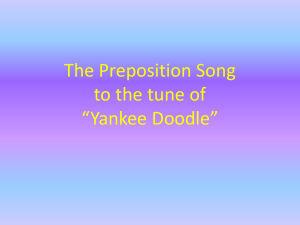
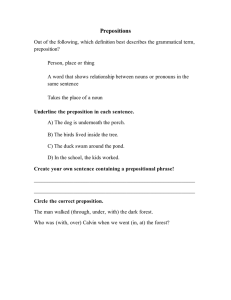
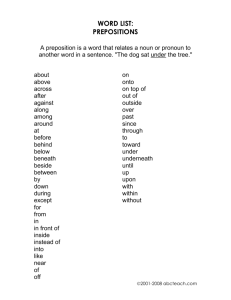
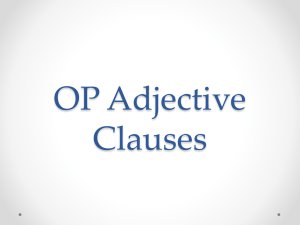
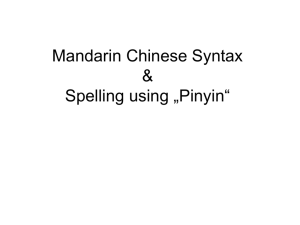
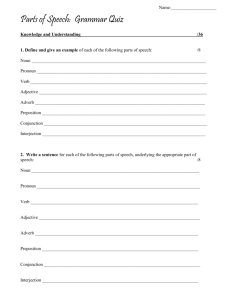

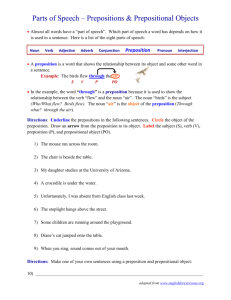

![succeed in ([doing] something)](http://s3.studylib.net/store/data/007092191_1-44cde08e787284f3fdfa01713016d562-300x300.png)